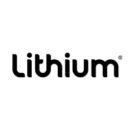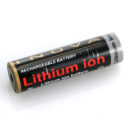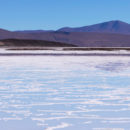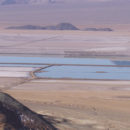Electric car revolution brightens outlook for a medley of metals
LONDON: Electric cars such as the Nissan Leaf may look no different from the standard family runaround. But the new materials that go into them could revolutionize the market for metals used in the industry, opening up a new field for commodities investors.
“We identified electric vehicles as an area where we are at an inflection point for demand,” said Duncan Goodwin, portfolio manager of the Baring Global Resources Fund.
Around 12 percent of the fund’s $378.2 million in assets is exposed to materials that are used in electric vehicles. It has investments in New York-listed Albemarle and Australia’s Orocobre, two companies producing lithium, a key element in electric car batteries. Shares in both companies have risen sharply this year.
Governments, keen to push growth in electric cars in a bid to meet their carbon emissions targets, are tempting consumers with perks like subsidies, free parking and tax breaks. Growth in the market is in turn creating an opportunity for commodities investments currently estimated at $235 billion.
But it is not a simple one-way bet.
Predicting how much of any metal will be needed to meet demand for electric vehicles in the longer term is tough and advances in battery technology could alter the mixture.
Getting drivers to adopt electric cars remains a challenge – the need to charge them up frequently and time taken to do so have put off many potential buyers.
Read MoreLithium Ion Battery Market To Surge By Its Advantages Such As Higher Efficiency And Longer Lifespan Than Other Batteries
Lithium-ion Battery are a part of rechargeable battery group. Lithium-ion batteries offer high storage capacity, better efficiency and long lifecycle than other batteries. The demand for these batteries are increasing in various applications such as consumer electronics products, automotive application such as EVs and HEVs and energy storage systems in power plants and household electricity.
Growing Use of Low Power Capacity Lithium-ion Batteries in Consumer Electronics
In terms of application, the lithium-ion battery market can be segmented into consumer electronics, automotive, and grid energy and industrial. Consumer electronics is projected to be the leading segment of the global lithium-ion battery market during the forecast period. This segment is anticipated to account for nearly half the market by 2024, driven mainly by the rising demand for low power capacity lithium-ion batteries to be used in smartphones.
However, owing to market saturation in several regions, the demand for high power capacity batteries for automobiles has gained precedence. The automotive segment will gain a significant share in the lithium-ion battery market by the end of 2024. The rising usage of these batteries in EVs, HEVs, and BEVs has primarily boosted this segment and this surge can be attributed to the increasing level of awareness among consumers and automobile manufacturers alike regarding the benefits of clean fuel.
Read MoreU.S. plans to stockpile more lithium compounds used in batteries
LONDON Oct 5 (Reuters) – The U.S. Defense Logistics Agency (DLA) said it has a mandate to buy 600 kg of lithium cobalt oxide (LCO) and 2,160 kg of lithium nickel cobalt aluminium oxide (NCA) in the fiscal year starting Oct. 1.
The amounts were detailed by the DLA in its Annual Materials Plan for financial year 2016-2017, which runs from October to September, published on its website this week.
They are double the 300 kg of LCO and 1,080 kg of NCA it was mandated to buy in the 2015-2016 fiscal year.
Both compounds are used to make lithium-ion batteries. LCO batteries are used for mobile phones and laptops and NCA batteries are used for electric vehicles.
In 2014 the DLA was authorised for the first time in 20 years to acquire new materials for the National Defense Stockpile (NDS). It has authorisation to buy cobalt compounds from fiscal year 2014 through fiscal year 2019.
Under the Defense Production Act of 1950, the U.S. Geological Survey advises the DLA on the acquisition and disposal of NDS mineral materials.
(Reporting by Pratima Desai; Editing by Alexander Smith)
Read More
The Electric Car Revolution Is Making These Investors Very Optimistic
It’s been a good time to be betting on lithium mines.
Electric cars such as the Nissan Leaf may look no different from the standard family runaround. But the new materials that go into them could revolutionize the market for metals used in the industry, opening up a new field for commodities investors.
“We identified electric vehicles as an area where we are at an inflection point for demand,” said Duncan Goodwin, portfolio manager of the Baring Global Resources Fund.
Around 12% of the fund’s $378.2 million in assets is exposed to materials that are used in electric vehicles. It has investments in New York-listed Albemarle and Australia’s Orocobre, two companies producing lithium, a key element in electric car batteries. Shares in both companies have risen sharply this year.
Governments, keen to push growth in electric cars in a bid to meet their carbon emissions targets, are tempting consumers with perks like subsidies, free parking and tax breaks. Growth in the market is in turn creating an opportunity for commodities investments currently estimated at $235 billion.
Read MoreNevada Energy Metals Starts Lithium Exploration Survey at San Emidio Desert, Nevada $BFF.ca

- Sampling program designed to test for lithium values in surface soils and/or playa evaporates has been initiated at the Company’s 100% owned San Emidio Desert property
- Geochemical sample points are being arranged on a grid pattern of eighteen lines spaced 400 meters apart with stations every 200 meters along the lines
- Expected that 172 sample points will be measured. Results should be available in approximately three weeks
October 4, 2016 / Vancouver, British Columbia- Nevada Energy Metals Inc. “the Company”, TSX-V: BFF (OTCQB: SSMLF) (Frankfurt: A2AFBV) is pleased to announce that a sampling program designed to test for lithium values in surface soils and/or playa evaporates has been initiated at the Company’s 100% owned San Emidio Desert property. Geochemical sample points are being arranged on a grid pattern of eighteen lines spaced 400 meters apart with stations every 200 meters along the lines. It is expected that 172 sample points will be measured. Results should be available in approximately three weeks.
Read More






